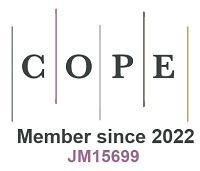REFERENCES
1. King LA, Hubert MA, Capuano C, et al. A non-precious metal hydrogen catalyst in a commercial polymer electrolyte membrane electrolyser. Nat Nanotechnol 2019;14:1071-4.
2. Varnell JA, Tse EC, Schulz CE, et al. Identification of carbon-encapsulated iron nanoparticles as active species in non-precious metal oxygen reduction catalysts. Nat Commun 2016;7:12582.
3. Malko D, Kucernak A, Lopes T. In situ electrochemical quantification of active sites in Fe-N/C non-precious metal catalysts. Nat Commun 2016;7:13285.
4. Bashyam R, Zelenay P. A class of non-precious metal composite catalysts for fuel cells. Nature 2006;443:63-6.
5. Leng Y, Yang B, Zhao Y, Xiang Z. Fluorinated bimetallic nanoparticles decorated carbon nanofibers as highly active and durable oxygen electrocatalyst for fuel cells. J Energy Chem 2022;73:549-55.
6. Li X, Liu Q, Yang B, Liao Z, Yan W, Xiang Z. An initial covalent organic polymer with closed-F edges directly for proton-exchange-membrane fuel cells. Adv Mater 2022;34:e2204570.
7. Bates JS, Johnson MR, Khamespanah F, Root TW, Stahl SS. Heterogeneous M-N-C catalysts for aerobic oxidation reactions: lessons from oxygen reduction electrocatalysts. Chem Rev 2023;123:6233-56.
8. Liu J, Wan X, Liu S, et al. Hydrogen passivation of M-N-C (M = Fe, Co) catalysts for storage stability and ORR activity improvements. Adv Mater 2021;33:2170300.
9. Patniboon T, Hansen HA. Acid-stable and active M-N-C catalysts for the oxygen reduction reaction: the role of local structure. ACS Catal 2021;11:13102-18.
10. Shi Q, He Y, Bai X, et al. Methanol tolerance of atomically dispersed single metal site catalysts: mechanistic understanding and high-performance direct methanol fuel cells. Energy Environ Sci 2020;13:3544-55.
11. Sun K, Dong J, Sun H, et al. Co(CN)3 catalysts with well-defined coordination structure for the oxygen reduction reaction. Nat Catal 2023;6:1164-73.
12. Sun Y, Silvioli L, Sahraie NR, et al. Activity-selectivity trends in the electrochemical production of hydrogen peroxide over single-site metal-nitrogen-carbon catalysts. J Am Chem Soc 2019;141:12372-81.
13. Zhao CX, Li BQ, Liu JN, Zhang Q. Intrinsic electrocatalytic activity regulation of M-N-C single-atom catalysts for the oxygen reduction reaction. Angew Chem Int Ed Engl 2021;60:4448-63.
14. Singh SK, Kashyap V, Manna N, et al. Efficient and durable oxygen reduction electrocatalyst based on CoMn alloy oxide nanoparticles supported over N-doped porous graphene. ACS Catal 2017;7:6700-10.
15. Chen Z, Higgins D, Yu A, Zhang L, Zhang J. A review on non-precious metal electrocatalysts for PEM fuel cells. Energy Environ Sci 2011;4:3167-92.
16. Ratso S, Kruusenberg I, Käärik M, et al. Highly efficient transition metal and nitrogen co-doped carbide-derived carbon electrocatalysts for anion exchange membrane fuel cells. J Power Sources 2018;375:233-43.
17. Yu Y, Zhou J, Sun Z. Novel 2D transition-metal carbides: ultrahigh performance electrocatalysts for overall water splitting and oxygen reduction. Adv Funct Mater 2020;30:2000570.
18. Das TK, Jesionek M, Çelik Y, Poater A. Catalytic polymer nanocomposites for environmental remediation of wastewater. Sci Total Environ 2023;901:165772.
19. Feng X, Bai Y, Liu M, et al. Untangling the respective effects of heteroatom-doped carbon materials in batteries, supercapacitors and the ORR to design high performance materials. Energy Environ Sci 2021;14:2036-89.
20. Cheon JY, Kim JH, Kim JH, Goddeti KC, Park JY, Joo SH. Intrinsic relationship between enhanced oxygen reduction reaction activity and nanoscale work function of doped carbons. J Am Chem Soc 2014;136:8875-8.
21. Liu M, Sun T, Peng T, et al. Fe-NC single-atom catalyst with hierarchical porous structure and P−O bond coordination for oxygen reduction. ACS Energy Lett 2023;8:4531-9.
22. Wang Y, Li K, Cheng R, et al. Enhanced electronic interaction between iron phthalocyanine and cobalt single atoms promoting oxygen reduction in alkaline and neutral aluminum-air batteries. Chem Eng J 2022;450:138213.
23. Madhavachary R, Abdelraheem EMM, Rossetti A, et al. Two-step synthesis of complex artificial macrocyclic compounds. Angew Chem Int Ed Engl 2017;56:10725-9.
24. Luo Y, Chen Y, Xue Y, et al. Electronic structure regulation of iron phthalocyanine induced by anchoring on heteroatom-doping carbon sphere for efficient oxygen reduction reaction and Al-Air battery. Small 2022;18:e2105594.
26. Shao M, Chang Q, Dodelet JP, Chenitz R. Recent advances in electrocatalysts for oxygen reduction reaction. Chem Rev 2016;116:3594-657.
27. Luo M, Zhao Z, Zhang Y, et al. PdMo bimetallene for oxygen reduction catalysis. Nature 2019;574:81-5.
28. Wang HF, Chen L, Pang H, Kaskel S, Xu Q. MOF-derived electrocatalysts for oxygen reduction, oxygen evolution and hydrogen evolution reactions. Chem Soc Rev 2020;49:1414-48.
29. Li X, Xiang Z. Identifying the impact of the covalent-bonded carbon matrix to FeN4 sites for acidic oxygen reduction. Nat Commun 2022;13:57.
30. Li X, Liu D, Liu Q, Xiang Z. A pyrolysis-free method toward large-scale synthesis of ultra-highly efficient bifunctional oxygen electrocatalyst for zinc-air flow batteries. Small 2022;18:e2201197.
31. Li X, Liu Y, Xiang Z. Dithiine bridged phthalocyanine-based covalent organic frameworks for highly efficient oxygen reduction reaction. J Phys Chem C 2022;126:4008-14.
32. Yang S, Yu Y, Gao X, Zhang Z, Wang F. Recent advances in electrocatalysis with phthalocyanines. Chem Soc Rev 2021;50:12985-3011.
33. Li X, Chen T, Yang B, Xiang Z. Fundamental understanding of electronic structure in FeN4 site on electrocatalytic activity via dz2-orbital-driven charge tuning for acidic oxygen reduction. Angew Chem Int Ed Engl 2023;62:e202215441.
34. Liang Z, Guo H, Zhou G, et al. Metal-organic-framework-supported molecular electrocatalysis for the oxygen reduction reaction. Angew Chem Int Ed Engl 2021;60:8472-6.
35. Wang X, Wang B, Zhong J, et al. Iron polyphthalocyanine sheathed multiwalled carbon nanotubes: a high-performance electrocatalyst for oxygen reduction reaction. Nano Res 2016;9:1497-506.
36. Choi J, Kim J, Wagner P, et al. Highly ordered mesoporous carbon/iron porphyrin nanoreactor for the electrochemical reduction of CO2. J Mater Chem A 2020;8:14966-74.
37. Côté AP, Benin AI, Ockwig NW, O’Keeffe M, Matzger AJ, Yaghi OM. Porous, crystalline, covalent organic frameworks. Science 2005;310:1166-70.
38. Liu Y, Diercks CS, Ma Y, et al. 3D covalent organic frameworks of interlocking 1D square ribbons. J Am Chem Soc 2019;141:677-83.
39. Lyle SJ, Osborn Popp TM, Waller PJ, Pei X, Reimer JA, Yaghi OM. Multistep solid-state organic synthesis of carbamate-linked covalent organic frameworks. J Am Chem Soc 2019;141:11253-8.
40. Lyu H, Diercks CS, Zhu C, Yaghi OM. Porous crystalline olefin-linked covalent organic frameworks. J Am Chem Soc 2019;141:6848-52.
41. Diercks CS, Lin S, Kornienko N, et al. Reticular electronic tuning of porphyrin active sites in covalent organic frameworks for electrocatalytic carbon dioxide reduction. J Am Chem Soc 2018;140:1116-22.
42. Nguyen HL, Hanikel N, Lyle SJ, Zhu C, Proserpio DM, Yaghi OM. A porous covalent organic framework with voided square grid topology for atmospheric water harvesting. J Am Chem Soc 2020;142:2218-21.
43. Zhang B, Wei M, Mao H, et al. Crystalline dioxin-linked covalent organic frameworks from irreversible reactions. J Am Chem Soc 2018;140:12715-9.
44. Gropp C, Ma T, Hanikel N, Yaghi OM. Design of higher valency in covalent organic frameworks. Science 2020;370:eabd6406.
45. Yamamoto T, Hayashi Y, Yamamoto A. A novel type of polycondensation utilizing transition metal-catalyzed C-C coupling. I. preparation of thermostable polyphenylene type polymers. Bull Chem Soc Jpn 1978;51:2091-7.
46. Zhou Z, Yamamoto T. Research on carbon - carbon coupling reactions of haloaromatic compounds mediated by zerovalent nickel complexes. Preparation of cyclic oligomers of thiophene and benzene and stable anthrylnickel(II) complexes. J Organomet Chem 1991;414:119-27.








